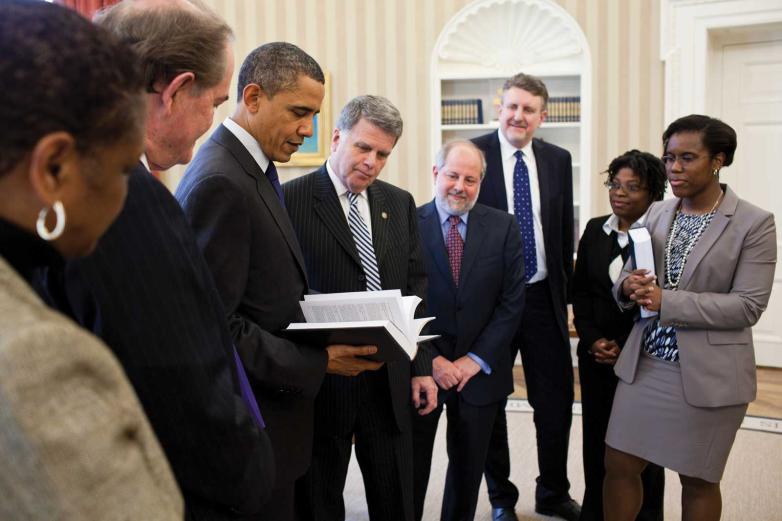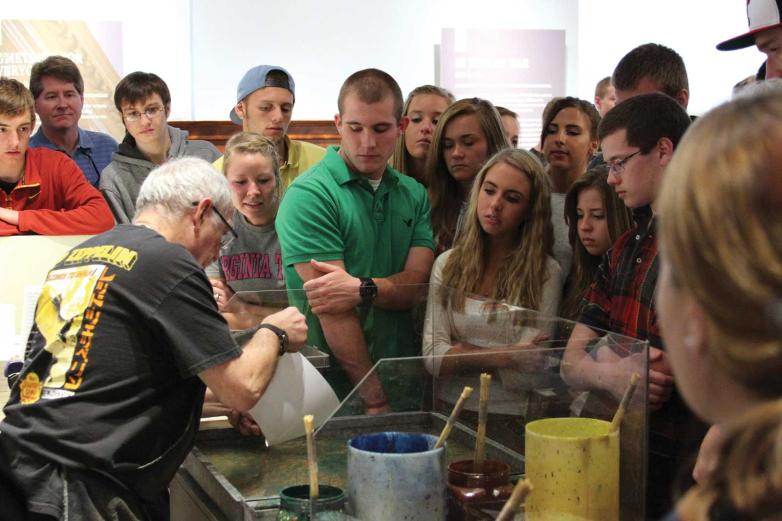During the administration of George W. Bush, James was included in the party presenting the first six-month book to the president. “It was a special exception,” said James, who has bound books for three presidents. “The public printer wanted someone there with hands-on experience in producing the book.”
James said it’s doubtful such an occurrence will happen again, especially since questions have also been raised as to whether or not the Public Papers will continue on in print form. At a cost to taxpayers of about $40,000 a volume, it’s not hard to see a paperless future for the Public Papers. James, for his part, is philosophical about the growing possibility of an online-only version. “It’s progress. You can’t stand in the way,” he said.
“Books like these were made for the Internet,” said Daniel Weinberg, owner of the Abraham Lincoln Book Shop in Chicago, Illinois. “The Public Papers are more a research work than a collectible book,” he added, pointing to the Encyclopedia Britannica as an example that “Not all books are meant to be preserved.”
Better to collect presidential biographies or autobiographies, said Weinberg. “These are snapshots into the real history of the president.”
It’s not that the Public Papers don’t reflect history, but it’s a more formal look at the president than what’s available in a biography, and the Public Papers are edited. “The material goes through the Department of Communications,” explained Rottinghaus, and if the president misspoke or mispronounced a word, for example, it will be cleaned up. Yet the same is true of presidential autobiographies. “Most are sanitized versions of what really happened,” he said, “Or they’re not very forthcoming.” He cited as an example the autobiography of President Lyndon Johnson. Johnson was known in Washington as a first-rate raconteur, said Rottinghaus. “People looked forward to his book, but when it came out, it disappointed them because it was so muted.”
Yet there is something to be said for the minutiae that streams from the White House and its presidential residents. “The Public Papers let anyone take a look at how the business of the president is conducted,” Rottinghaus said. “They serve as a map to how the president talks about the issues of the day. And they’re valuable in allowing uniform access to the information.”

















